Main menu
Common skin conditions

NEWS
Join DermNet PRO
Read more
Quick links
Created 2008.
Insects are arthropods i.e. invertebrates with chitinous exoskeletons, bilateral symmetry, true segmentation and jointed true appendages. Arthropods also encompass arachnids, centipedes and millipedes.
Centipedes (Chilopoda) have one pair of legs per body segment and millipedes (Diplopoda) have two pairs per segment. Rarely, centipedes may cause painful bites that may ulcerate. Disturbed millipedes do not bite but emit a toxic fluid that irritates the skin and may discolour it brown.
The order Insecta includes:
Mosquitoes and sandflies account for most bites in New Zealand and rarely cause serious harm. Hypersensitivity reactions to bee and wasp stings may result in localized oedema or anaphylaxis and precipitate discoid eczema or vasculitis. Secondary infection may result in impetigo or cellulitis.
Elsewhere in the world, numerous crawling and flying insects cause bites and stings. They are also responsible for the spread of other contagious diseases, including:
Diptera insects have two wings. They are responsible for a lot of discomfort and illness worldwide.
Insect bite reactions are a response to irritating salivary secretions injected by the female mosquito to anticoagulate the blood. Males mosquitoes are harmless as they do not have piercing mouthparts. The bite may appear urticarial, papular, vesicular, eczematoid or granulomatous.
Immediate urticarial reaction Bullous insect bite Multiple bites 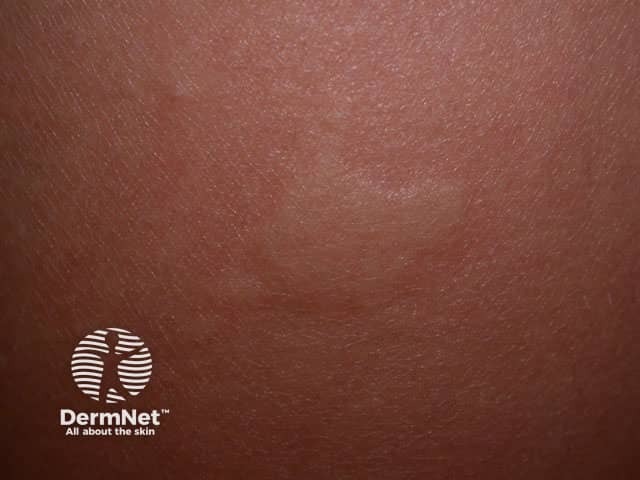
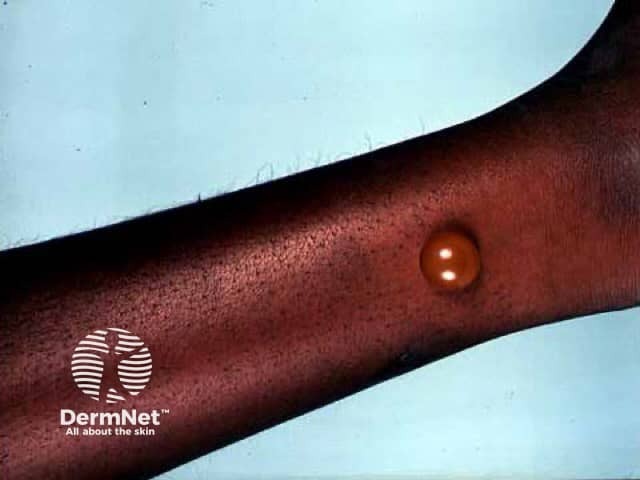

Other biting flies include sandflies (Phlebotomus), midges, horse flies, deer flies and black flies. Cutaneous myiasis may be caused by the deposition of fly larvae into open wounds.
Cleanse bites thoroughly with soap and water to avoid secondary infection.
Papular urticaria describes clusters of irritable urticated papules, most often due to bites by mosquitoes, sandflies, fleas. mites or sometimes bed bugs. Each spot is erythematous but may have a pale centre, and elevated (urticated). There is often a central punctum at the site of penetration of the insect bite or sting and a vesicle may appear. Lines of bites are characteristic. A few individuals may have bullous lesions, especially tourists exposed to new insects. Older lesions tend to be excoriated firm papules with scabs and crusts.
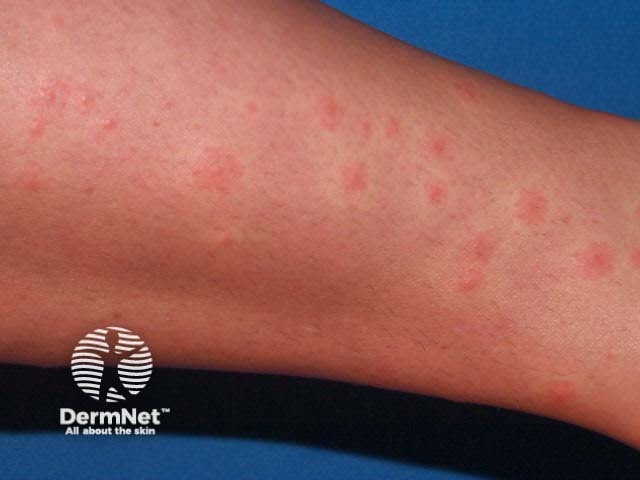
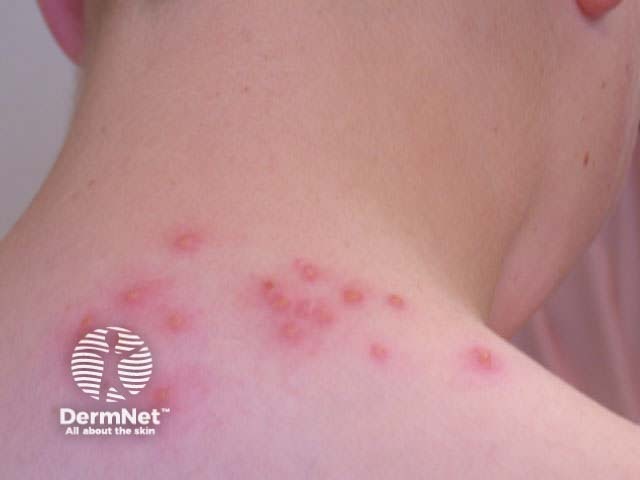
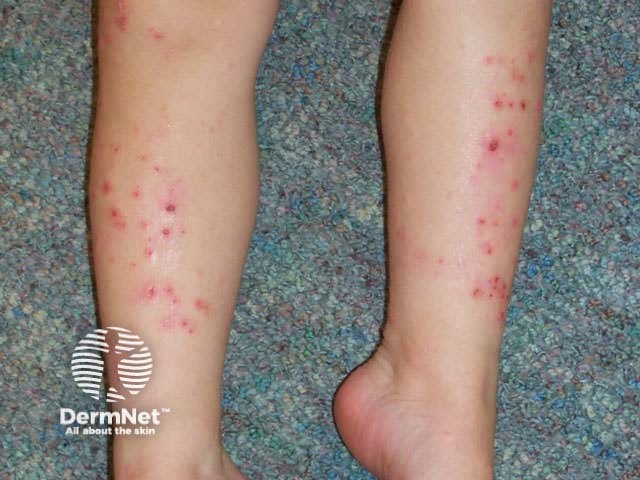
Children with papular urticaria may present with numerous lesions on exposed areas, particularly the lower legs but also arms, cheeks and waistline. Papules may persist for weeks, and older lesions may reappear with new crops presumably in response to new bites. Postinflammatory hypo- or hyperpigmentation and scars are common. The eruption may be seasonal, dying down in mid-winter to reappear in spring for two or three seasons until immune tolerance occurs.
Histology shows localised perivascular predominantly lymphohistiocytic infiltrate with eosinophils, dermal oedema, spongiosis and vesicle formation. Older lesions are modified by effects of scratching with the development of epidermal necrosis, crusting and an increased proportion of neutrophils.
Differential diagnosis includes:
Management should emphasise identification of the source of bites and prevention.
Hymenoptera species have poison glands; their stings produce immediate stinging and pain. Bees and wasps are prevalent worldwide. Ants in New Zealand cause little damage, but fire ants in South and North America are very troublesome. Reactions to hymenoptera stings include:
Localised swelling Blistering 
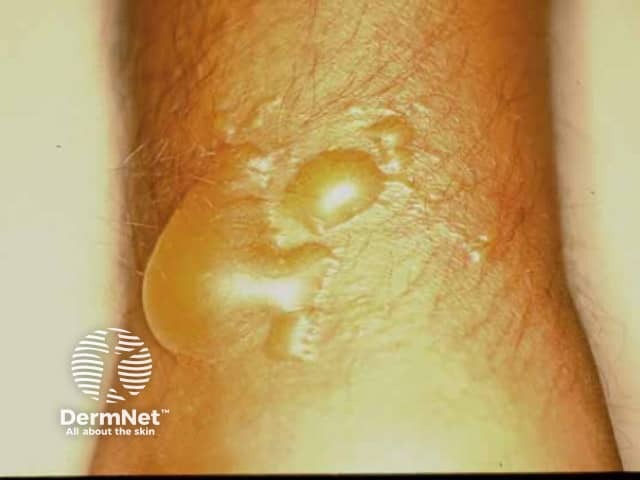
Remove the stinger from honey bee stings using a credit card or butter knife. Cool compresses, calamine lotion, analgesics and antihistamines are helpful. Severe swelling may be reduced by systemic steroids. Anaphylaxis should be managed by:
Affected individuals should carry adrenaline for self-administration (EpiPen® or a preloaded syringe).
Hemiptera mostly feeds on plant matter. Bedbugs feed on humans and are uncommonly encountered in New Zealand. The bedbug (Cimex lectularius) is readily seen as it is 3–6 mm in length, flat, broad and wingless. It hides during the day in cracks within headboards, skirting boards, behind wallpaper, between the sheets, in suitcases and clothing.
It scuttles back to its hiding place straight after feeding, which takes a few minutes and results in multiple painless bites (‘breakfast, lunch and tea’). They most often present as papules with a central haemorrhagic dot but blisters are sometimes observed.
Bedbug bites 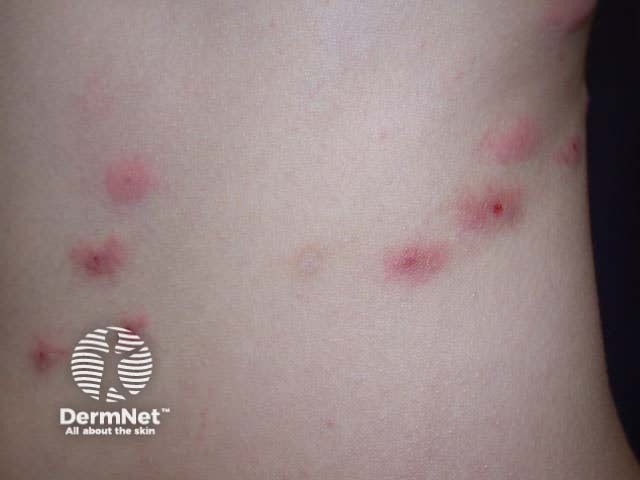
Kissing bugs (Triatoma species) are also bloodsuckers, called that because they bite near the lips and then defaecate on the bite. They are recognised by a triangular shape on their backs behind the head. There are none in New Zealand.
Beetles (Coleoptera) comprise 250,000 species or more. About 200 of them produce blisters on contact with the skin due to the production of cantharidin. Affected areas should be washed and bandaged.
Carpet beetles can cause an allergic papulovesicular dermatitis on exposed areas. In New Zealand, it may be due to the larvae of Anthrenus scrophulariae, A. verbasci, A. flavipes or Attagenus mezatoma. The adults are about 1cm long and most often found near windows. The larvae are scattered over the carpet (or other wool, fur and feathers).
Ladybird bites rarely may cause superficial necrotic papules. In New Zealand, the species responsible is Diomus notescens.
Localised vasculitis to unknown arthropod Ladybird bite 
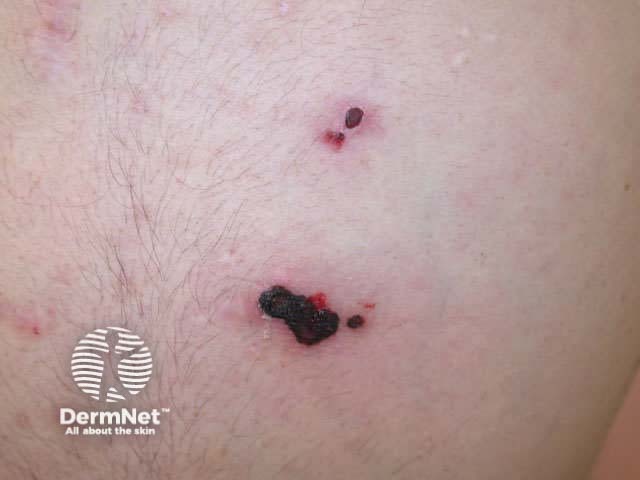
Moths and butterflies (Lepidoptera) may have irritating and allergenic hairs (setae). Contact with the certain caterpillars, such as the unwanted gipsy moth (Lymantria dispar), causes linear arrays of pruritic papules that persist for several days. Severely affected people may also have respiratory difficulties. It is not clear whether the effects are due to mechanical irritation, toxin injection or cell-mediated hypersensitivity. Symptoms can be relieved with oral antihistamines and local antipruritic lotions. The setae can be removed from the skin by adhesive tape stripping.
Discover which noxious insects are present in your locality, and how to identify them.
Information for patients